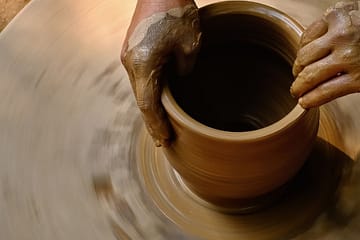How would the world look if our automatic reactions were generosity and trust? If both science and religion are right, and we are profoundly interconnected, generosity and trust should be our modus operandi. But because we are collectively entangled in systems based on extraction and individualism, the mere mention of generosity can sound naïve.
I know I am happier when I trust the world. I strive to be generous. And I fall short of both of these qualities quite a bit. Trust and generosity are intangible qualities, they are automatic reactions more than something you rationally choose. That’s why no matter how convincing and necessary it seems to be deeply trusting of the Universe, it can still be hard for me to do so.
It turns out the reason it is so hard to rationalize with my automatic responses is because rationalization and automatic responses happen in two different parts of the brain.
Bessel Van Der Kolk is a leading expert on trauma therapy and he explains that our perception of the world, especially how we perceive danger and safety, is stored in the Limbic System. This is the part of the brain connected with memory and threat, shaping our temperaments. Traumatic experiences are stored in this part of the brain, and effect our automatic reactions.
Most interestingly Van Der Kolk suggests that the only way to shift your predisposition – from mistrust to trust, for example – is to have deep, physical experiences that contradict the lesson that the brain learned from trauma. Mastering a martial art, for instance, can change the outlook of someone who thinks that they will be used by everyone in the world. Basic training in the military gives new recruits a sense that they can accomplish and survive much more than they thought possible of themselves.

Dancing has a similar affect on me: feeling part of a circle of dancers, our singing voices blending, the music pouring through us, and birds flying over us, together these experiences are gradually dissolving my fear that the world can’t or won’t support me. The more I dance, the more I understand how dancing has been a source of resilience for generations.
Faith, Hope, and Love
I have been deeply moved by my experiences of dancing Faith, Hope, and Love, a dance by Armenian Choreographer Shakeh Tchilingrian. Brain science from people like Bessel Van Der Kolk help me understand just why the dancing feels so powerful. I will be leading a short workshop exploring how we move towards more faith, hope, and love through dance and understanding brain science. A short video featuring Dr. Van Der Kolk is part of the resources I recommend viewing before the workshop.
If you are feeling like Trust, Hope and Love are not your automatic responses these days, but wish they were, I invite you to join me on January 29 for an evening of collective movement and reflection.
With love,
Emily
Movement practices to build positive experience for the body and mind
You are welcome to drop in any week to the Healing Waters Qigong Spring Forest Qigong Practice Group or to the Wisdom Dances dance practice based in Laura Shannon’s research on traditional dances as tools for healing and transformation.


